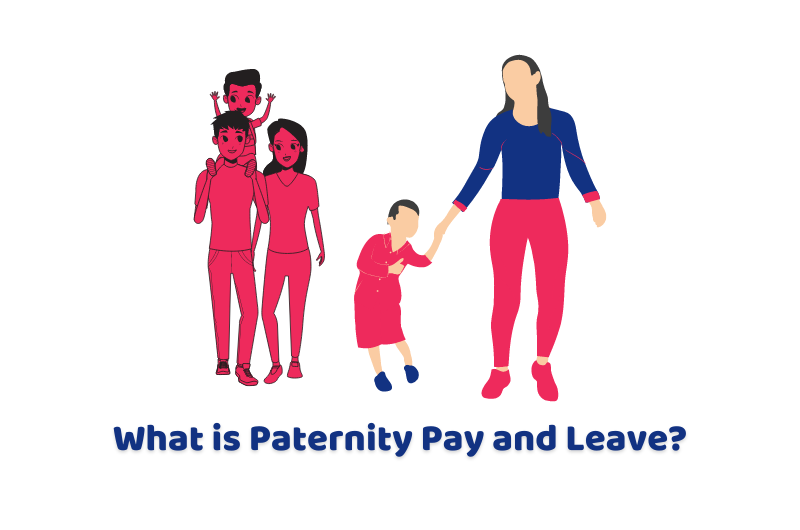If you are in the role of a father who is seeking official ways to get paternity leave and pay, you are on the right page. As this guide is based on all the relevant facts about paternity pay and leave. As it is known to be a kind of benefit that allows new fathers to take time off work to care for their children.
Furthermore, it is designed to help fathers bond with their newborn child and support their partner during the early stages of parenthood. The amount of paternity pay and leave you are entitled to depends on your employment status and how long you have been working for your employer. Let get delved into the discussion of this guide to gather more information about the basics.
Reach out to one of our professionals to get to know about paternity pay and leave in the UK. Get in touch with us and you will be provided instant professional help!
How to Define Statutory Paternity Leave and Pay?
As mentioned earlier statutory paternity leave is a set amount of time off work that fathers in the UK can take after their child is born. It is intended to give fathers the opportunity to bond with their newborn child and support their partner during this time. Fathers can take up to two weeks off work and may be eligible for statutory paternity pay during this time.
What are the Criteria to Qualify?
In order to be eligible for statutory paternity leave, the father will also have to provide their employer with the correct notice. This notice must be given at least 15 weeks before the baby is due, and it must include the expected week of childbirth, the date the father wants to start his leave, and how long he wants to take off work. The father must also provide evidence of their eligibility, such as a letter from the child’s mother or a birth certificate.
What is Shared Parental Leave?
Shared paternity leave is a flexible option for parents who want to share the responsibility of caring for their newborn child. It allows both parents to take time off work to care for the child, and they can choose how to split the leave between them.
Parents can take up to 50 weeks of leave and up to certain weeks of statutory shared parental pay. To be eligible for shared paternity leave, the parents must meet specific criteria, including employment, earning a minimum amount, and providing the correct notice to their employer.
What are the Criteria to Qualify for Shared Paternal Leave?
Now to be eligible for shared paternity leave in the UK, both parents must meet certain criteria. They must both be employed, have worked for the same employer for at least 26 weeks by the end of the 15th week before the due date, and earn a minimum amount.
Additionally, the mother must be eligible for maternity leave or pay, adoption leave or pay, and must have returned to work. Finally, both parents must provide the correct notice to their employers.
Can I Claim Paternity Leave and Pay?
If you aim to make a claim of paternity leave and pay in the UK, you must give your employer notice. You must provide notice at least 15 weeks before the due date as discussed before. You will also tell your employer when you want to start your leave and how long you want to take.
You must also provide evidence of your eligibility, such as a letter from the child’s mother or a birth certificate. Your employer will then confirm your eligibility and let you know how much pay you will receive.
What Will Happen if Your Employer Does Not Deal with it Fairly?
If you feel that your employer is being unfair in regard to paternity leave and pay, you should try to resolve the issue with them first. If this is not possible, you can raise a grievance with your employer.
If this does not lead to a resolution, you can contact the Advisory, Conciliation and Arbitration Service (ACAS) for free advice and support. You may also be able to make a claim to an employment tribunal.
What Will Happen in Case You Don’t Qualify for Paternity Leave and Pay?
If you do not qualify for paternity leave and pay, there are other options available to you. You may be able to take unpaid leave, which allows you to take time off work to care for your child without pay. You can also use your holiday leave if you have any.
Additionally, you may be able to negotiate flexible working arrangements with your employer, such as reduced hours or working from home.
The Bottom Line
To wrap up the discussion we can say that there are several options available for new fathers who want to take time off work to care for their children. Moreover, if you are eligible for paternity pay and leave, you can take advantage of these benefits. If you are not eligible, you can still take time off work by using your holiday leave, taking unpaid leave, or negotiating flexible working arrangements with your employer.
Need Help or Have a Query? Get in touch with our professionals at AccountingFirms. Connect with the Best Accounting and Tax Experts near you in just 3 minutes – Register now for Free!
Disclaimer: The information about the tax on paternity pay and leave provided in this blog includes text and graphics of general nature. It does not intend to disregard any of the professional advice.

